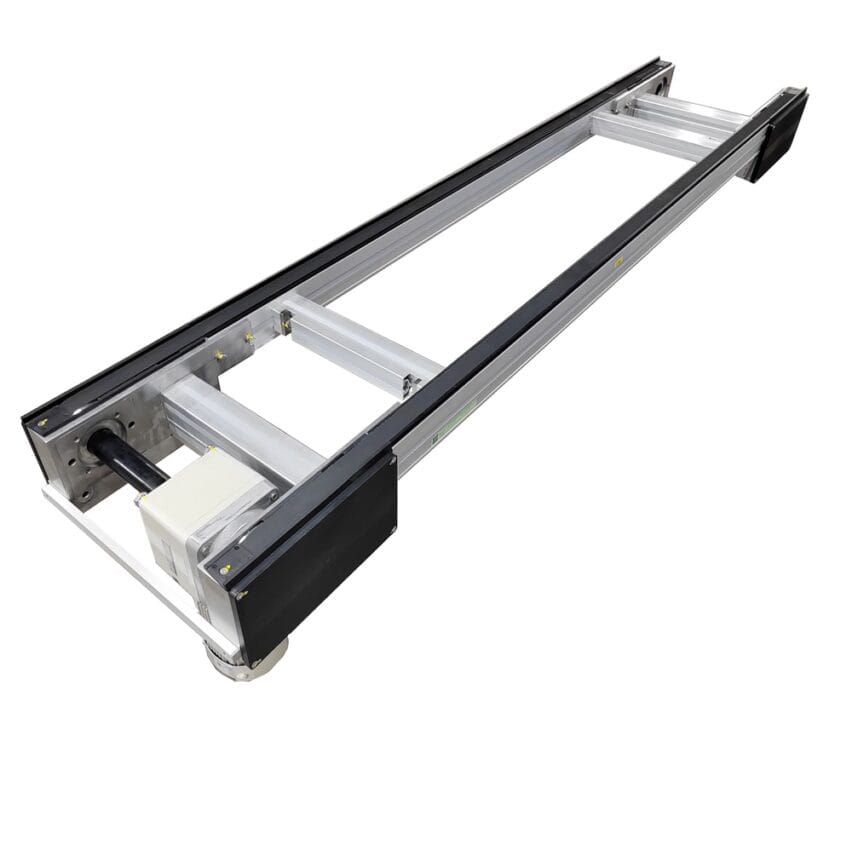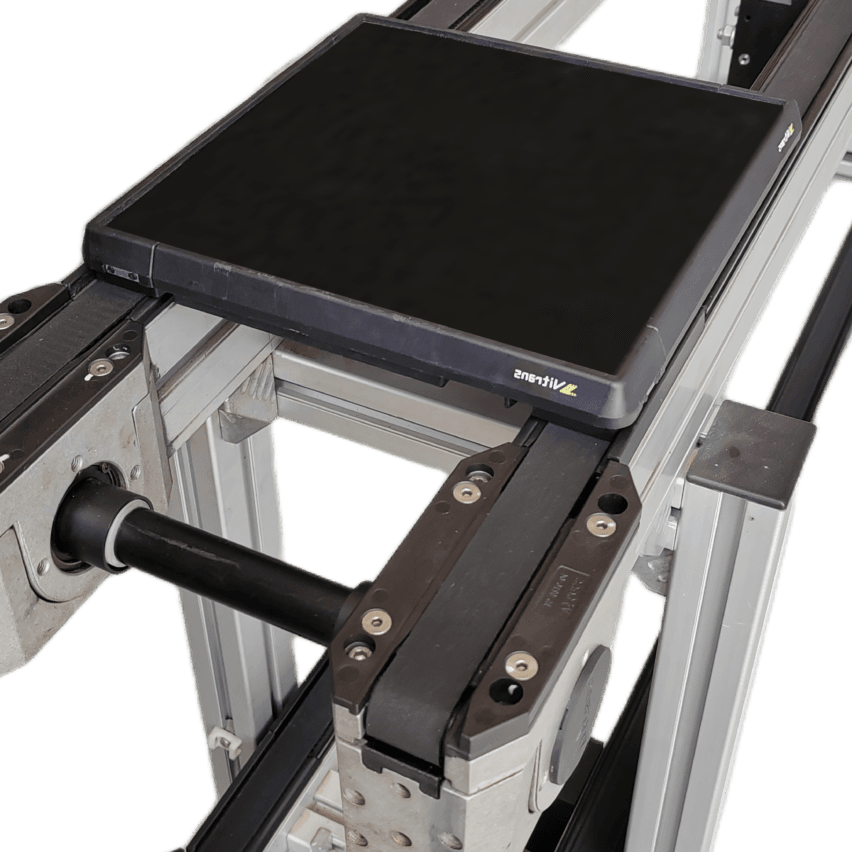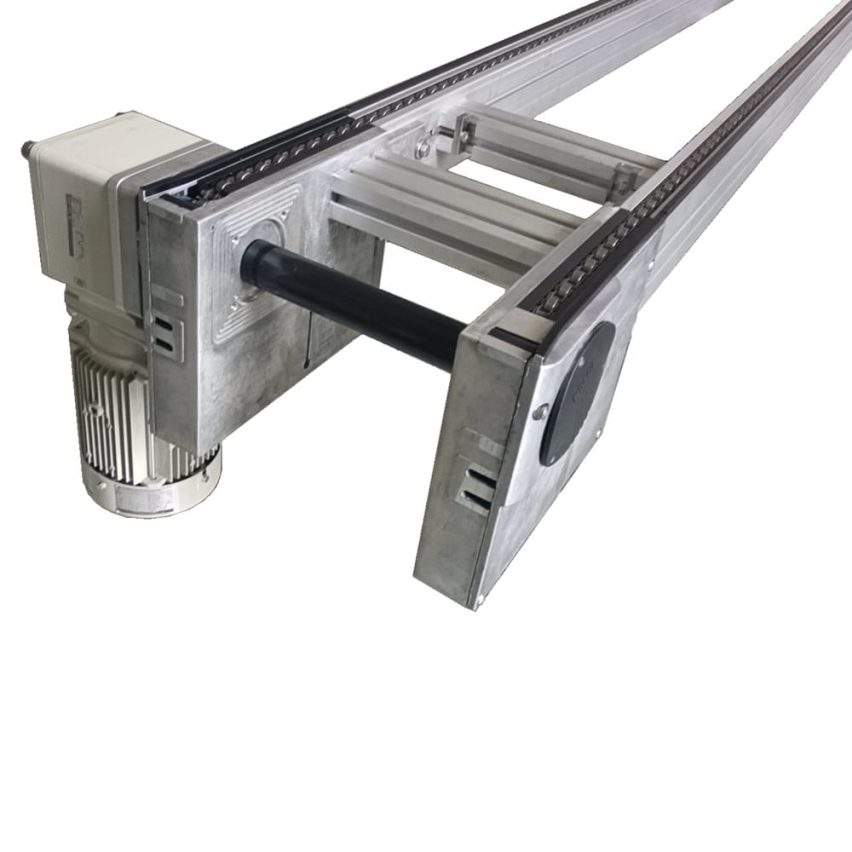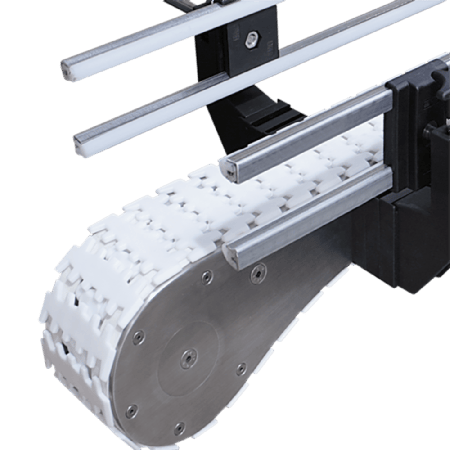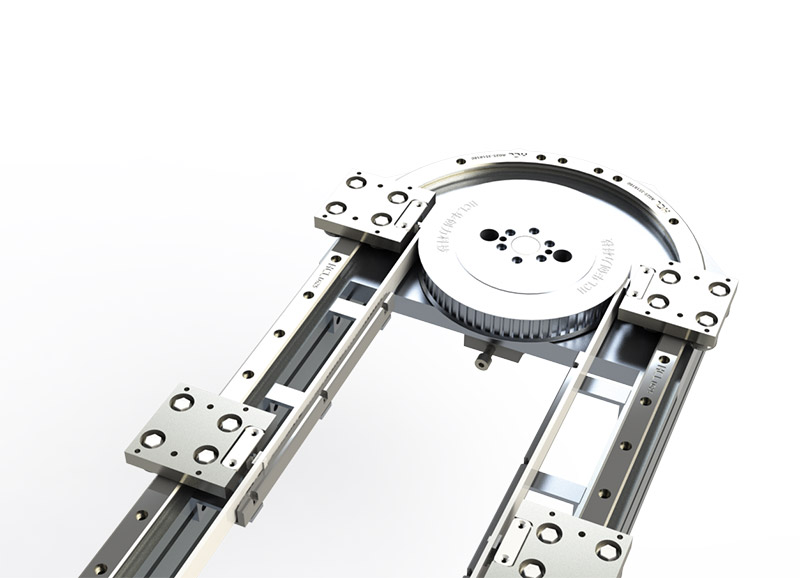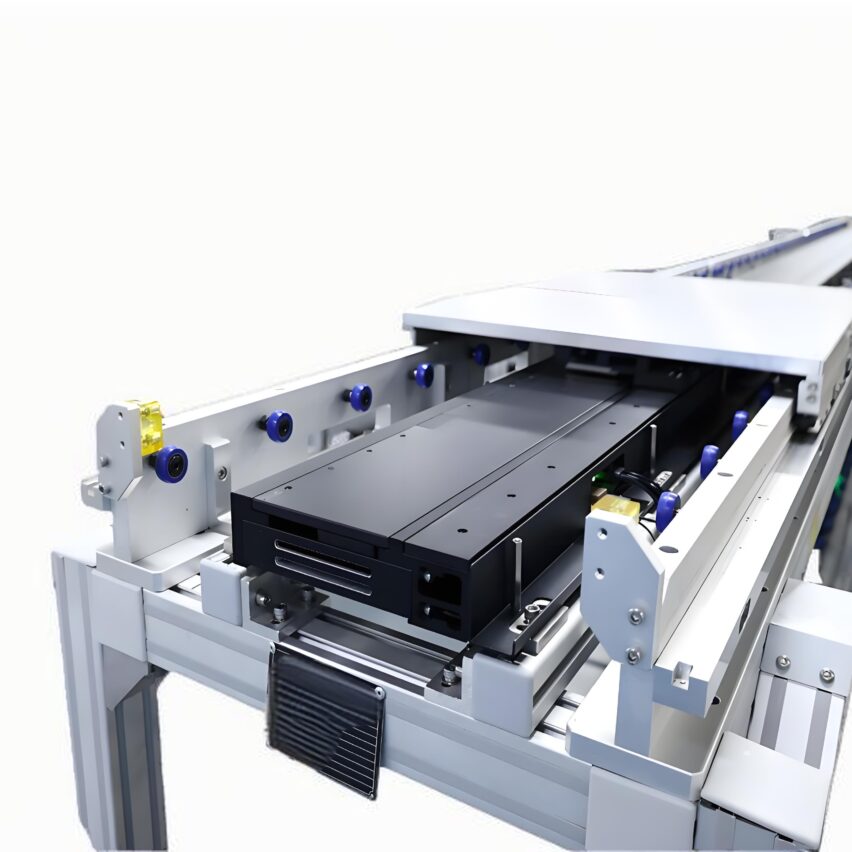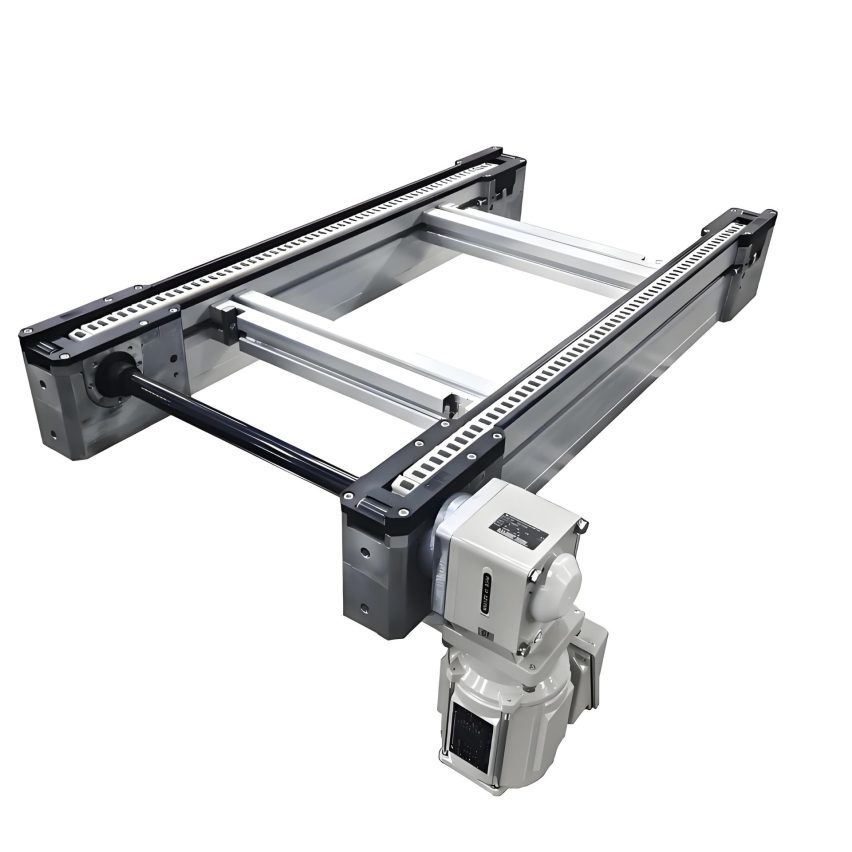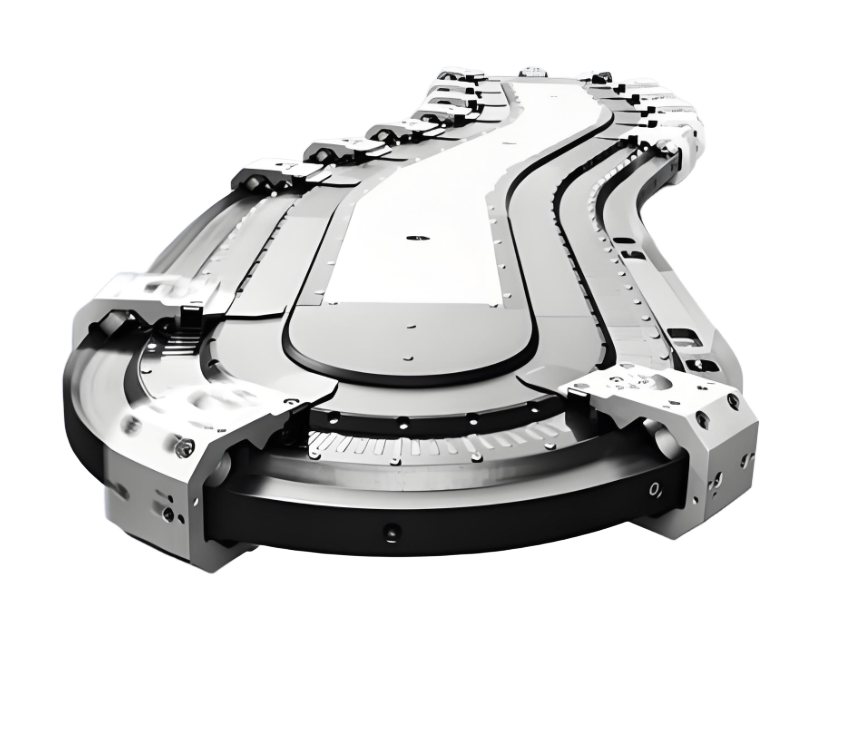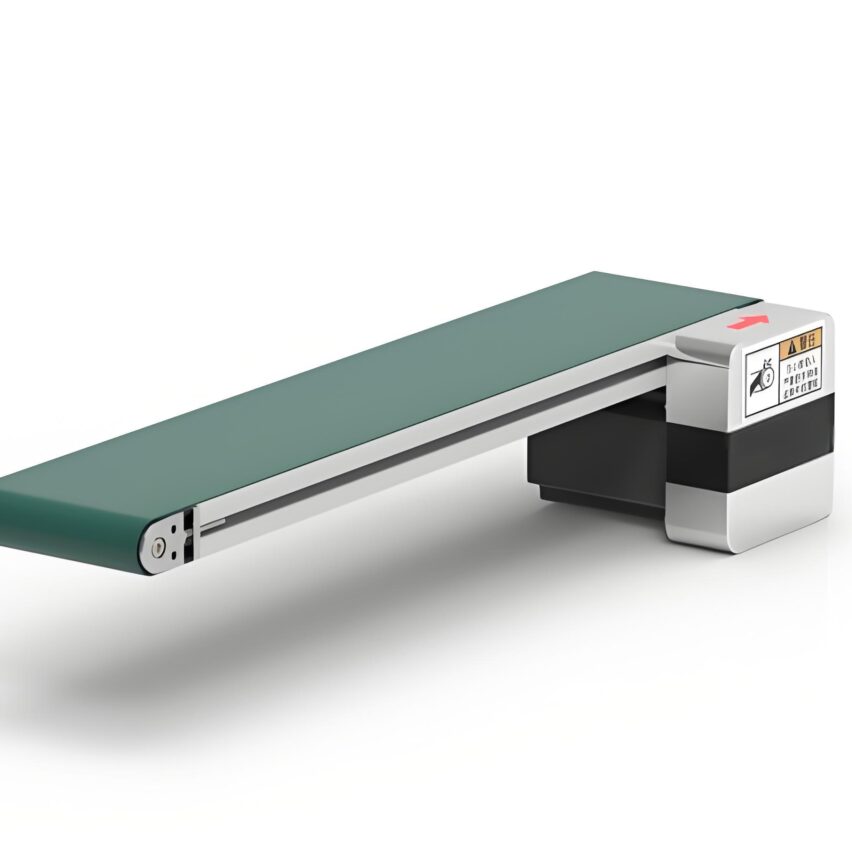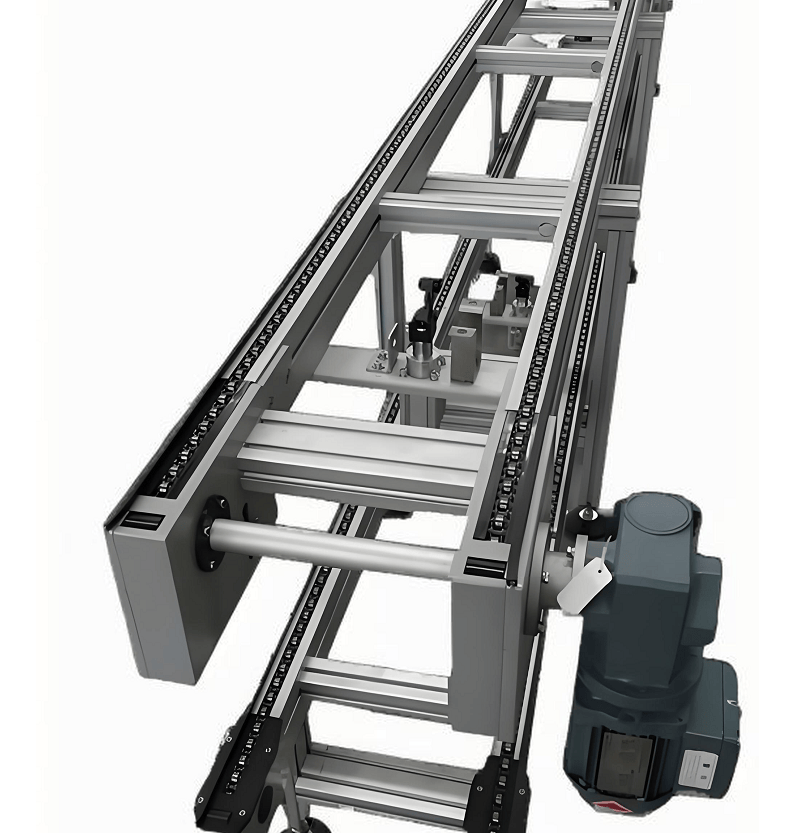Against the backdrop of a 12% annual increase in industrial land costs, theAn accurately sized, double-deck reflow doubler chain system frees up 37% of floor space.At the same time, the flexibility of the production line will be increased by 300% - this is not only an equipment upgrade, but also a reconstruction of the value algorithm of the manufacturing space.
I. The spatial revolution: how two-tier refluxes reconfigure the logic of efficiency
1. Compound gain of vertical loops
- Law of Space Compression: The upper production layer forms a closed loop with the lower empty plate return layer, through thePneumatic cylinder jacking leveller (output force ≥ plate weight × 1.5)Vertical transfer is realised, saving more than 37% of production line floor space as measured.
- Flow topology optimisationThe first and last closed-loop design eliminates end buffer redundancy in traditional production lines, shortening the cycle path of the tooling board by 40%, and increasing the production capacity of an electronics factory by 30%.
- Failure cost annihilationHydraulic cushion limiters reduce the collision rate of the workpiece from 11% to 0.5%, reducing annual maintenance costs by $1.2 million.Implicit cost control > explicit parameter optimisation.
2. Technology paradigm for industry customisation
make a copy of■ Automobile manufacturing: heavy-duty carbon steel frame + counterweight balancing system, carrying 800kg door vertical turning line (±0.5mm positioning) [4,10](@ref) ■ Electronic assembly: anti-static roller (resistance 10⁶-10⁹Ω) + servo jacking module, static discharge <0.1 sec [1,9](@ref) ■ Food and Pharmaceuticals: FDA seals + 0.5MPa closed-loop spraying, eradicating syrup residual stagnation [1,6](@ref)`` --- ### **II. Selection of life and death: the logic of selection of core parameters*** **1. The game formula of the timespeed ratio and load | Parameters | Common Misconceptions | Positive Solutions | |---------------|-------------------------|--------------------------| | Timespeed Ratio | Blindly Pursuing 3 Timespeed Chain | **Heavy Load Scenario Must Choose 2.5 Timespeed Chain** (Overload Tolerance ↑40%) | | Drive Mode | Full Scene Hydraulic Drive | **Pneumatic-Electric Hybrid Drive** (Heavy Duty Pneumatic/Light Duty Servo) | | | Frame Material | Single Carbon Steel Structure | **Carbon Steel for Heavy Duty + Aerospace Aluminium for Light Duty** (Weight ↓65%, Energy Consumption ↓28%) | > **Industry paradox*: 80% users believe that the return flow must be reduced speed, in fact, **servo closed-loop PID algorithm** so that the shift load misalignment rate from 18% down to 3% - **speed and precision can be both**. **2. Three Principles of Power Redundancy Design** - **Top lift position critical formula**: adjacent top lift point spacing ≥ 2 × length of the workpiece plate (600mm plate needs to be ≥ 1200mm spacing) - **Motor power redundancy**: reflux section motor power = linear section × 130%, to compensate for centripetal friction loss - **Velocity coupling equation**:V top = V chain × [1 - (H top / H an)]
■ V-top: safe speed of jacking (≤0.5 m/s)
■ H An: safety height margin (≥ 50 mm) "`case (law)A battery assembly line has thus compressed the jacking beat to 8 seconds per piece, with a yield of 99.98%.
III. Industry customisation: a technical solution to break through the pain points
▎ Automotive manufacturing: the art of heavy-duty reflux mechanics
- Three-dimensional closed-loop logistics: Body components are made fromAir friction track (verticality error <1.5mm)Achieve cross-layer flow and production line adjustment time ↓65%;
- shock absorption: The jacking station is embedded with polyurethane blocks + hydraulic dampers to absorb 85% of collision energy.
▎3C Electronics: Static Defence Warfare
- Anti-static ecosystem: Aluminium profile body + carbon brush deflector copper row, electrostatic discharge speed 1 second);
- Microvibration suppression: Combination of linear guide slider + air spring to counteract high-frequency vibration of jacking.
▎ Biopharmaceuticals: aseptic reflux closed loop
- Self-cleaning guides: Nano-silver coating (bacteriostatic rate 99.8%) + 50μm ultrasonic vibration plate, microbial residue <0.1g/m²;
- ISO Class 5 Cleanliness: Sealed chamber reduces the risk of particle contamination to 1/10th of conventional construction.
IV. The cost code: full-cycle economic modelling reconstruction
1. Fault attenuation for intelligent operations and maintenance
| Type of risk | Traditional losses | intelligent countermeasure |
|---|---|---|
| jacking asynchrony | 42 hours of downtime per month | Hall sensor warning + slope ≤ 12Hz/sec acceleration curve |
| Guide shaft bias grinding | Replacement cost = $80k/trip | Vibration spectrum analysis (error <±3μm) |
| air leakage | Annual loss of $24K | Pressure sensor real-time monitoring (±0.1MPa threshold) |
2. Stepped input strategy
make a copy of├─Primary stage: domestic 2.5 times the speed chain (cost ↓ 35%) + key bits of imported servo module └─Intelligent advanced: add IoT sensors ($120/pc) → pre-judge the failure to save $80,000/year [4](@ref)``` > **Space efficiency x failure decay = intellectual competitiveness**: a PV company measured $12,000 annual revenue per 1 metre of compressed length. --- ### **V. Exclusive data: the underestimated hidden value** - **Land cost leverage**: a new energy vehicle enterprise in 2,000 m² plant to achieve the traditional 5,000 m² capacity, land cost annual savings of $3,600,000; - **Energy consumption black hole crack**: pneumatic jacking + gravity potential energy recovery system, drive energy consumption straight down 28% (compared with traditional hydraulic); - **Flexible production premium**: modular jacking unit makes the production line transformation time shortened to the traditional 30%, adapting to the product iteration cycle shortened 50% market. --- ### **Self-questioning: decision-makers three questions to break the game ** **Q1: How to avoid the return flow "dead zone effect"? **Q1: How to avoid the "dead zone effect" of return flows? A: **Third-order space law**: 1. **Flow topology**: the angle between the main conveyor line and the jacking machine is ≥60°. 2; 2. **Buffer redundancy**: 1.2 times the board length of the photoelectric induction staging area is reserved before jacking; 3. **Power backup**: dual cylinders in parallel (0 seconds switching). **Q2: How to select the model for high humidity environment? ** A: **Material anti-corrosion equation**:Corrosion Resistance Index = Ambient pH × Salt Spray Concentration
■ pH>8: choose 316L stainless steel frame (cost ↑25%, life ↑8 years)
■ Salt spray > 5mg/m³: change roller to PTFE coating (coefficient of friction 0.04)"`Q3: When to choose single layer vs double layer?
A.Space value formula::make a copy ofSingle-storey applicable: Monthly production capacity <10,000 pieces or plant cost $100/㎡ or Process>15 passes need compact layout.``` > *Case*: After switching to a double-layer chain in a power plant, 2 new production lines were added in the same area and the ROI cycle was reduced to 14 months. --- > In the next decade, the value of production lines will be redefined as "spatial mobility x intelligent decay rate" **: In the era of Industry 4.0, the ability to annihilate **hidden costs** is becoming a new watershed in the competition of the manufacturing industry - companies that accurately control spatial algorithms and fault prediction will be able to compete in the land market. prediction will win the absolute advantage in the battlefield of double constraints of land and energy.

